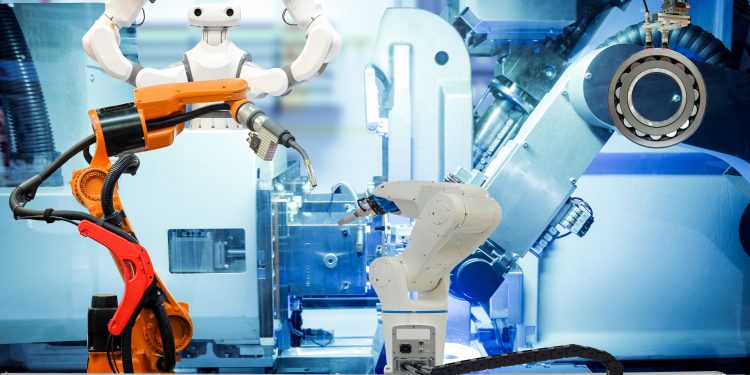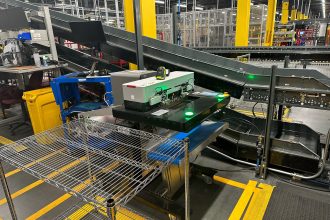Robotics in the Warehouse

The collaborative role of robots and humans leads to big results.
The term “robots” gets thrown around loosely, especially in the context of material handling. While it represents a very broad category of equipment, it can be helpful to understand the varying types and levels of robotics solutions, specifically in material handling and the role each can play. However, no matter what, the biggest barrier against robotics tends to be the misconception that they are there to replace humans. The truth is their role is collaborative rather than substitutive.
Robots in warehousing come in many flavors, from articulating arms that can pick up and move items to shuttle systems like automated storage and retrieval systems (ASRS), to autonomous mobile robots (AMRs) and automated guided vehicles (AGVs). They can touch and enhance just about any process on your floor, especially as qualified labor becomes harder to come by. Take picking, for instance—robots can transport just about any product once picked, working alongside the picker and saving him or her the time required to move that item to another area of the floor. In the case of AMRs, this sophisticated equipment can move around the floor freely, avoiding obstacles as it goes.
All that said, even the most sophisticated robots are no substitute for what humans can do. In some cases, a robot might be able to pick at about 90 percent the capacity of a human counterpart, but they aren’t at 100 percent. They are not replacing human labor, but enhancing or complementing it. In the example of picking, you’re going to send a robot to manage a product you’re 100 percent confident in. More challenging picks, however, go to humans.
Palletizing is another example of human/robotic collaboration. If you’ve got a heavy load to palletize, placing a human behind a robotic arm to guide it and allow it to pick up/palletize that hefty weight can be a game changer. It saves the human employee the strain, wear and tear that they could face lifting heavy items, but still gives him or her the higher thinking piece of the task. Robots can also take on repetitive tasks for humans, tasks that might otherwise bore an employee and lead to burnout or job dissatisfaction.
Returning to using robots for picking, some companies incentivize their staff to use robots to increase productivity. When employees pick faster, they receive bonuses or hourly increases as a result.
Smart companies are considering all the angles for employee retention, and when you save money with robots, you can apply that toward your staff’s salaries, giving them more satisfaction in their work and more reason to stick around.
All that said, even the most sophisticated robots are no substitute for what humans can do. In some cases, a robot might be able to pick at about 90 percent the capacity of a human counterpart, but they are not at 100 percent. They are not replacing human labor, but enhancing or complementing it. In the example of picking, you’re going to send a robot to manage a product you’re 100 percent confident in. More challenging picks, however, go to human workers.
Palletizing is another example of human/robotic collaboration. If you’ve got a heavy load to palletize, placing a human worker behind a robotic arm to guide it and allow it to pick up/palletize that hefty weight can be a game changer. It saves the worker the strain, wear and tear that they could face lifting heavy items, but still gives him or her the higher thinking piece of the task. Robots can also take on repetitive tasks for humans, tasks that might otherwise bore an employee and lead to burnout or job dissatisfaction.
Returning to using robots for picking, some companies incentivize their staff to use robots to increase productivity. When employees pick faster, they receive bonuses or hourly increases as a result.
Smart companies are considering all the angles for employee retention, and when you save money with robots, you can apply that toward your staff’s salaries, giving them more satisfaction in their work and more reason to stick around.
No matter what the role or collaboration, the end result is the same: humans report more job satisfaction when they can hand over the mundane, repetitive, and physically demanding jobs to a robot partner. This makes good business sense and can go a long way to keeping your staff engaged and on the job.
Source: Christoph Buchmann, Movu Robotics
To learn more about The Robotics Group (TRG): mhi.org/trg
For further articles from the The Robotics Group (TRG):
Order Orchestration Optimization Through Robots
Robotics in Logistics, Part 2 – You’ve Decided to Add Robots—Now What?
Will Robots Change Your Warehouse Culture?
Robots Make Work Easier For Humans
When Flooring Takes Center Stage In Robotics
How To Avoid Potential Pitfalls Of Robotics Ownership
Your Guide To Successful Metrics For Automation Implementation



